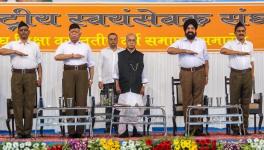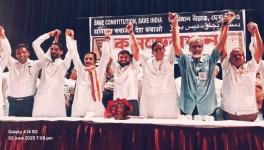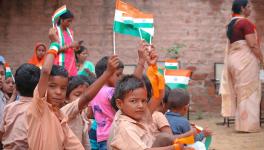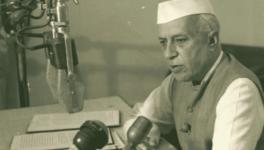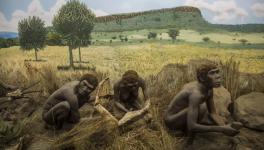Interpreting India's Freedom Movement Through Art
Delhi Durbar 1903 and 1911 (Image Courtesy: DAG)
"My grandfather was dancing on the roads of Sylhet, modern-day Bangladesh. He was very happy on that night. After all, the country was being liberated (sic)."
This message was one of many written on postcards and pinned to a table alongside hundreds of postcards documenting personal stories about the Indian independence movement at the Indian Museum in Kolkata, the capital of the British Indian empire, until 1911.
On August 15, 1947, while many celebrated the formation of an independent India, millions living on the wrong side of the new borders between India and Pakistan were forced from their ancestral lands and migrated to an alien land. Several postcards reflected the pain of that migration.
"All I know is that on the night of August 14, 1947, a bulk of people did not know which country they belonged to. Freedom came with a huge cost (sic), may we never forget that."
Several activities like this are a part of the "March to Freedom" exhibition, which features 160 works of art and historical artefacts. Mrinalini Venkateswaran, a historian and curator, explores India's freedom movement through stories that have overlooked certain aspects and are challenging our assumptions.
She says that a standard approach in our history textbooks presents history as a series of events that most people can't relate to. She wanted to take a different approach to understand history, challenge people's assumptions and present a perspective that may not have been considered.
"History is not a straightforward progression from bad times to good times. It was not once we achieved independence that everything was great. History is more messy and complicated than that. Seventy-five years is a decent enough interval for us to be able to take stock," she says.
Venkateswaran says that when we read the history of the freedom struggle, we cannot personally relate to it. So the postcard activity is an opportunity to ask people to pause and reflect on what the partition of India might have meant for their families.
"Experiences are diverse. Not everyone in Punjab, for example, suffered. There might be people in places like Tamil Nadu or Kerala who suffered due to the partition of India, but those are not places we associated with the kind of chaos of partition."
The postcard activity has garnered a warm response because Venkateswaran believes it humanises history and allows people to own and participate in it.
The exhibition displays the works of Henri Cartier-Bresson, who captured images of Gandhi's last days before his assassination, Chittoprasad, a political artist who documented the Bengal famine of 1943-1944, and photographers Nemai Ghosh and Raghu Rai.
Scarcity in India and British Plenty: Two paintings by Henry Singleton displayed in the exhibition, explains why the British thought they had the right to rule India. It presented Indians as inadequately clothed and poor. In contrast, British plenty showed women to be fully clothed and also displayed the military might of the British through the ships in the background. (Image courtesy: DAG)
Venkateswaran deviates from the well-accepted narrative of the Indian independence movement and partition. She nudges the visitors by asking questions on every label with the corresponding description of the art, telling them to keep aside the linear version of India's freedom movement history. Instead, she encourages them to explore the stories, narratives and people who have been side-lined and do not feature in the national consciousness of the freedom movement.
In an essay in the catalogue, Maroona Murmu, professor, Department of History, Jadavpur University, discusses how popular and official narratives about India's march to freedom overlook the stories of adivasis, dalits, and the tribes of the North East. The exhibition also explores nationalist imagery and its many omissions, including the invisibility of women in popular depictions of the freedom movement despite their crucial role. This stands in strong contrast to the hypervisibility of the female form as an embodiment of the nation.
Another interesting aspect the exhibition explores is how Indians foreground the British-Indian conflict. And even within that, there's a difference between British Indian and princely India.
"There were other European colonies on the Indian subcontinent, and those experiences of colonisation and independence are quite different from the rest of India. So we don't focus on that diversity in our textbooks. It's also about the French in Pondicherry or the Portuguese in Goa."
The exhibition draws on the Delhi Art Gallery (DAG's) extensive modern and early modern Indian art collection. The works ranged from 18th- and 19th-century European paintings and prints to unknown works by Indian artists that merit greater recognition and several iconic pieces by celebrated modern artists. Particularly noteworthy are a selection of seldom-seen photographs, historical maps, travel posters, and cinema ads that add to the diversity of material showcased in this grand-scale collaboration.
Puja Bhattacharjee is an independent journalist based in Kolkata.
Get the latest reports & analysis with people's perspective on Protests, movements & deep analytical videos, discussions of the current affairs in your Telegram app. Subscribe to NewsClick's Telegram channel & get Real-Time updates on stories, as they get published on our website.











